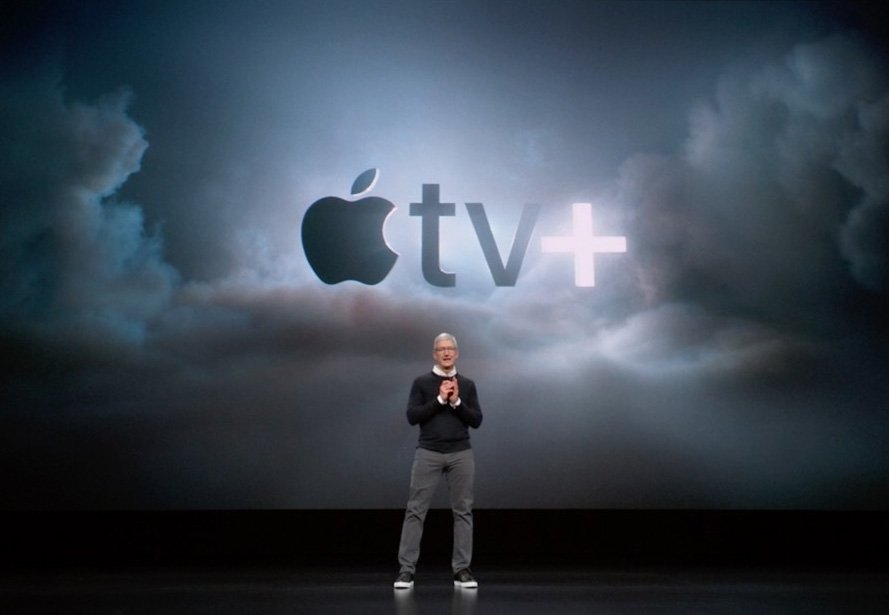Goldman Sachs predicts 26% downside for Apple based on Apple TV+ accounting (Updated)

What you need to know
- Apple Card partner Goldman Sachs predicts a 26% downside for AAPL.
- That's due to the way Apple will account for the free Apple TV+.
- Apple will move the revenue from hardware to services, skewing figures.
Update: Apple has responded to Goldman Sachs' outlook that Apple TV+ will have a negative impact on the company's earnings in a statement to CNBC.
"We do not expect the introduction of Apple TV+, including the accounting treatment for the service, to have a material impact on our financial results," the company said in a statement to CNBC.
Goldman Sachs may be Apple's partner for Apple Card, but it isn't pulling any punches by saying it predicts a 26% downside for AAPL because of they way it intends to account for the Apple TV+ service it will give away.
Each iPhone, iPad, Apple TV, Mac, and iPod touch bought will also receive a free year of Apple TV+ service. That's worth around $60 to the customer, but the money has to come from somewhere. Apple plans to take the $60 from its hardware figures, particularly iPhone, and then move it to its services division. That, in turn, means that the iPhone numbers will appear worse than they are because $60 from each sale will immediately be taken away.
Goldman analyst Rod Hall, in an investor note picked up by CNBC, is concerned that analysts will see the raw numbers and not consider just what is going on beneath the surface.
"We believe that Apple plans to account for its 1-year trial for TV+ as a ~$60 discount to a combined hardware and services bundle," wrote Goldman analyst Rod Hall, in a note."Effectively, Apple's method of accounting moves revenue from hardware to Services even though customers do not perceive themselves to be paying for TV+. Though this might appear convenient for Apple's services revenue line it is equally inconvenient for both apparent hardware ASPs and margins in high sales quarters like the upcoming FQ1′20 to December," Hall added.
Hall has also put together some math to explain what he means, with the overall impact on Apple's hardware figures being around 7%.
Here's an example of how Hall expects Apple's accounting will work in this instance. You buy a new iPhone 11 Pro for $1,000 (Hall rounded the $999 price to make the example easier). Apple accounts for the purchase as a bundle, as you're getting an iPhone 11 Pro and and a year of TV+, valued at $1,060. But the $60 discount for TV+ "is not solely apportioned to the TV+ revenue," Hall said, and Apple instead proportionally divides the discount to both.Hall believes the combined discount is 5.7%, or $60 divided by $1,060. Applied to the bundle, the iPhone is discounted to $943.40 (or 94.3% of $1000) and TV+ annual price discounted to $56.60 (or 94.3% of $60). As a result, and assuming the iPhone is not bought with an installment plan, Hall found that, while the iPhone has a lower average price, it also comes at a lower profit to Apple because the cost of goods is not affected by the company's discount. However, at the same time, Hall expects the discounted TV+ revenue will be credited as "deferred revenue" and then "recognized on a monthly basis over the 12-month trial period," he said."We calculate a possible ~7% negative impact on FQ1 and FY20 [average selling prices] due to this accounting treatment," Hall said.
The important thing to remember is there will be no overall change to margins, but if you look at hardware and services you'll see one inflated, and one deflated. All from selling devices with free services attached.
iMore offers spot-on advice and guidance from our team of experts, with decades of Apple device experience to lean on. Learn more with iMore!

Oliver Haslam has written about Apple and the wider technology business for more than a decade with bylines on How-To Geek, PC Mag, iDownloadBlog, and many more. He has also been published in print for Macworld, including cover stories. At iMore, Oliver is involved in daily news coverage and, not being short of opinions, has been known to 'explain' those thoughts in more detail, too.
Having grown up using PCs and spending far too much money on graphics card and flashy RAM, Oliver switched to the Mac with a G5 iMac and hasn't looked back. Since then he's seen the growth of the smartphone world, backed by iPhone, and new product categories come and go. Current expertise includes iOS, macOS, streaming services, and pretty much anything that has a battery or plugs into a wall. Oliver also covers mobile gaming for iMore, with Apple Arcade a particular focus. He's been gaming since the Atari 2600 days and still struggles to comprehend the fact he can play console quality titles on his pocket computer.
